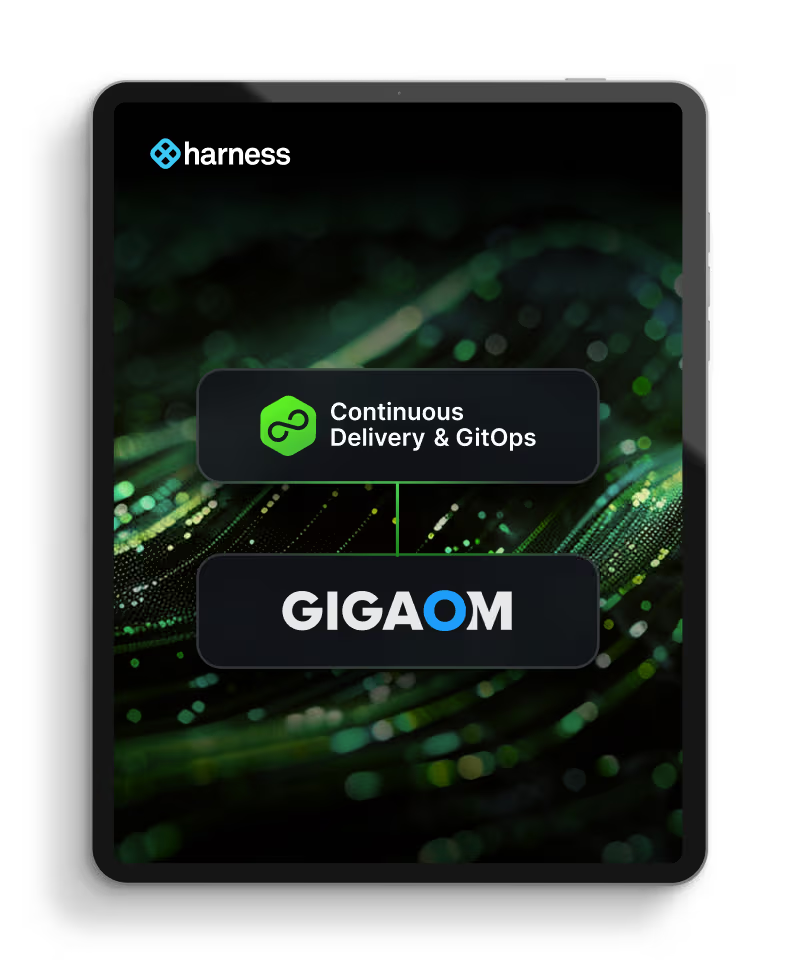
Harness CD
vs.
Digital.ai
Comparing Digital.ai and Harness for DevOps tools
UPDATEd ON
1 Dec
2025
SaaS & On-Premises
<yes><yes>
<yes><yes>
No Scripting Required
<yes><yes>
<yes><yes>
Ease of Use
<yes><yes>
<with><with>
Cloud-Native App Support
<yes><yes>
<yes><yes>
Traditional App Support
<yes><yes>
<yes><yes>
Canary Deployments
<yes><yes>
<with><with> Manual Analysis
Infrastructure Provisioners
CloudFormation and Terraform
CloudFormation and Terraform
GitOps (Pipelines as Code)
<yes><yes>
<yes><yes>
Continuous Verification™
<yes><yes>
<no><no>
Change Management Jira/SNOW
<yes><yes>
<yes><yes>
Role-Based Access Control
<yes><yes>
<yes><yes>
Secrets Management
<yes><yes>
<with><with>
Audit Trails
<yes><yes>
<yes><yes>
Accelerate Metrics & Reporting
<yes><yes>
<yes><yes>

Harness is a leader in GitOps by GigaOm Radar Repor
Harness Named a Leader in the 2025 GigaOm Radar Report for GitOps
Detailed feature comparison
SaaS & On-Premises:
A bit of history: Digital.ai, formerly XebiaLabs, was built and architected as on-prem software back in 2008. They released a lightweight, limited SaaS version in 2019. Updates are released every quarter. Reading between the lines, it can take a while for Digital.ai to resolve bugs. Harness offers SaaS and on-prem versions – and they both offer the same features. Harness updates are done on a daily basis.
Ease of Use:
Digital.ai Deploy was recently named a leader in The Forrester Wave™: Continuous Delivery and Release Automation, Q2 2020. They received the highest scores possible in 19 criteria, including Product Innovation, Security, and User Experience. According to the report, customers were favorable on ease of deployment, the platform’s overall flexibility, and the value the solution provides to their organizations in accelerating software delivery. Digital.ai Deploy provides a robust list of integrations(Featured Integrations(https://digital.ai/integrations)) and has plugins to provide extensibility. However, many of the reviews we could find online on Digital.ai Deploy were unfavorable when it comes to cost, ease of use/learning curve, and lack of features. Indeed, some users have referred to the initial setup/configuration as taking so much time they might as well have used a different tool, and the learning curve for complex issues was described as insane. Documentation being a nightmare or incomplete is referenced a few times as well. Harness, on the other hand, saves developers and DevOps time and effort. Harness also boasts a super simple, sleek UI. Additionally, Harness eliminates plugin and integration maintenance by running everything as containers. Getting a simple pipeline running takes 15 minutes, ensuring time-to-value is minimal.
Canary Deployments:
To utilize Canary deployments in Digital.ai Deploy, users will need to manually define the Canary process and manually configure their load balancers. Digital.ai Deploy has helpfully documented the process. However, it’s a cumbersome process when you can have a platform like Harness that provides Canary deployments out of the box – no coding required, only some minor config.
GitOps:
Digital.ai Deploy provides limited GitOps capabilities (pipelines as code) where YAML is linked to a single git project vs. one or more branches (for teams). No bidirectional sync exists, manual applies must be done to retain metadata, and diffs are not visualized between versions. Harness provides full GitOps capabilities.
Continuous Verification™:
Continuous Verification is the process of monitoring your app for abnormalities after a deployment. For example, Continuous Verification could catch a latency issue or 5xx errors and automatically roll back your app to the previous version. The idea is to catch errors as quickly as possible – ideally, before customers notice – and make a seamless transition back to the prior version. Digital.ai Deploy only supports Dynatrace (time-series metrics only) for deployment verification, and this capability is not linked to automatic rollback or verifying canary phases. Harness, however, provides Continuous Verification out of the box, effectively reducing risk and reputational damage from downtime. As for vendor integrations, Harness supports Prometheus, Datadog, AppDynamics, New Relic, StackDriver, CloudWatch, and custom monitoring and observability tools.
Secrets Management:
Digital.ai Deploy currently only offers secrets management through HashiCorp Vault. They do not offer native management or any other third party provider support. Harness, on the other hand, offers built-in secrets management. No third parties are required, but all of the major secrets managers are supported.
Accelerate Metrics & Reporting:
There are four key metrics when it comes to software development: Lead Time (the average amount of time it takes from the time code is checked in to the version control system to the point in time where it is deployed to production), Deployment Frequency (the number of times deploys to production occur in a time period), Mean Time to Restore (MTTR: how long it takes to resolve or rollback an error in production), and Change Failure Rate (what percentage of changes to production fail). These metrics are paramount in truly understanding performance. Digital.ai Deploy does offer DORA metrics tracking. Harness also offers a beautiful dashboard specifically for these metrics and allows you to set alerts as needed – for example, you could set an alert to notify you if the Change Failure Rate goes above 1%.
*Please note: Our competitors, just like us, release updates to their products on a regular cadence. We keep these pages updated to the best of our ability, but there are bound to be discrepancies. For the most up-to-date information on competitor features, browsing the competitor’s new release pages and communities are your best bet.


